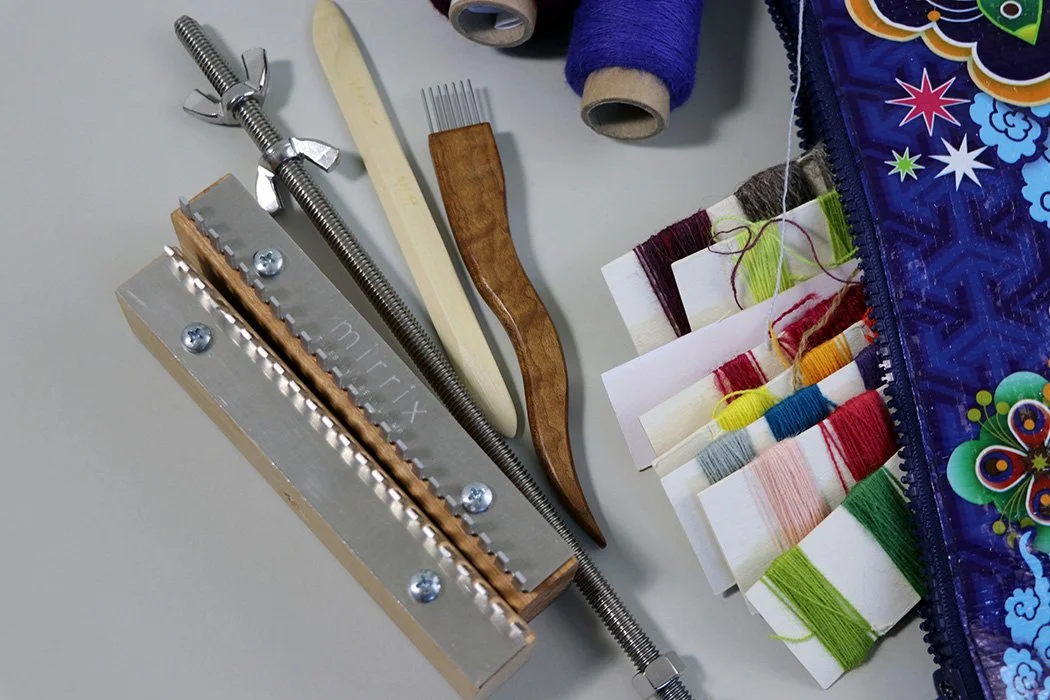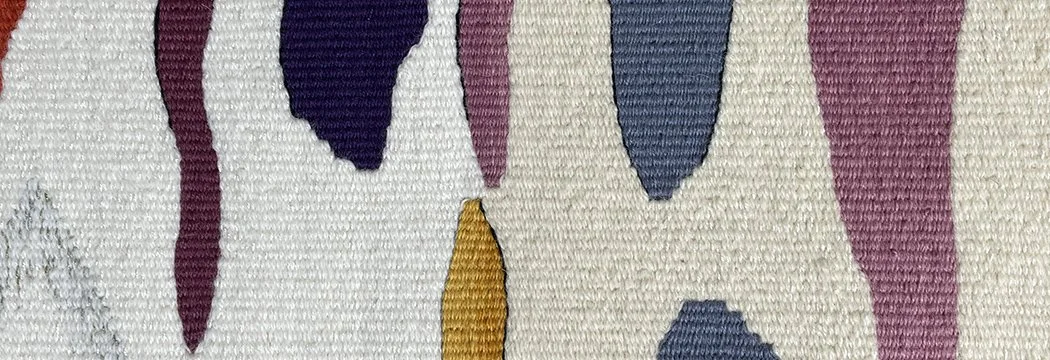I’m constantly experimenting with tools and yarn and techniques in tapestry weaving. It gives me a lot of joy and though the outcomes of these experiments is sometimes unpleasing, the process is always educational and more ideas surprise me with their success than not. Lately I’ve been working on a loom that weaversbazaar in the UK sells. It is a simple tensioned frame made by Andrew Dickinson.*
The beauty of a tensioned frame loom.
Tension is the friend of a tapestry weaver. At least it is for me. I do know some tapestry weavers who love a floppy warp and who weave very large things on wooden non-tensioned frames that have nails on the edges. I admire their ability to manage the weave with non-tensioned equipment at such a large size! But for me, a loom with some tensioning ability is the best.







